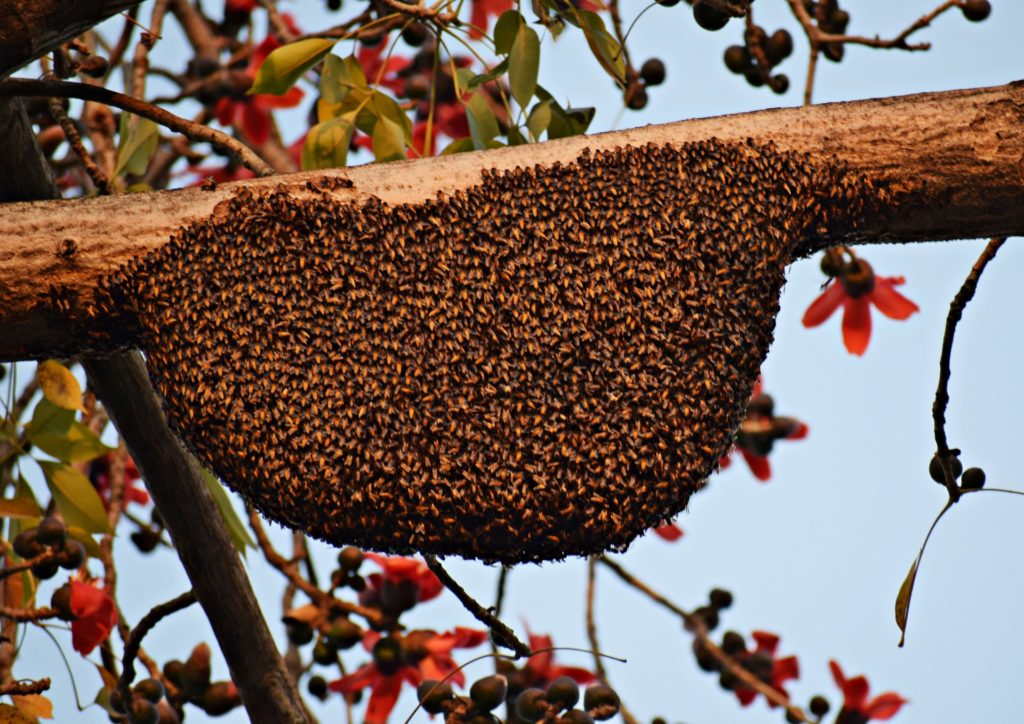Can swarming be prevented is something that most of the beekeepers are not familiar with. There is often a question on the matter. With the question, often comes an answer that is believed to be a myth. This answer is that you should give more space to the bees in order for them to be less crowded.
According to the book Honeybee Democracy by Thomas Seeley, no one knows what the reason for bees to start swarming is. It is still unknown if crowding causes swarming or vice versa. Or maybe, there is a third factor that causes it? We only know that these are two processes that happen at the same time. There are a number of things that are often correlated with the swarming. For example: having too many adult bees, having too many young bees or expanding food reserves. One thing is for sure: often the colonies make one or two additional swarms after the first one. Even after these several swarming, the bees continue to swarm, and now we know that they are not crowded. The reasons why swarms are leaving are not always that obvious.
When does the swarming process begin?
It is really hard to say with strict precision when the process begins. Every colony is different and there is not a concrete time or a date. But, there are some signs that you must look for and act upon them. The very first thing that you will notice is the construction of swarm cells. Also, most probably you will notice backfilling of the brood nest with nectar. When the queen cups have started and there is an egg laid, a mature virgin will emerge in about sixteen days. This is a sign that the swarming decision must have occurred around two weeks before this event.
How does a colony prepare for swarming?
In these two weeks, the colony is going through big changes. The queen lays fewer eggs, her rearing goes full throttle and she is becoming skinnier so she can fly. Another thing is that the scouts start looking for different place to move to. Additionally, the workers are stuffing themselves with honey and they become more inactive. They are usually positioned around the hive entrance and they wait for the sign that allows them to leave.

Swarming preventing techniques
Luckily, there are many experienced beekeepers who often offer to share their techniques to prevent swarming. So, here we provide a useful technique for delaying or preventing swarming. You can try and by opening up honey barriers that have been built above the brood nest. This technique has shown to be very effective, so there is no harm in trying it.
Advice for more successful swarming prevention
Be aware that some manoeuvres (like spreading the brood nest or checker-boarding above the brood nest) must be done before the colony has made the decision to swarm. So, this is why you need to be more present at your hive’s location during this time (early spring). Once they begin their process of swarming, and you miss that, there is not much that you can do. There are many experiences where beekeepers and their mentors decide to give the bees an extra super once the swarming has begun. But, according to these experiences, this is useless as the process has already started.
Takeaway message
You will not make a mistake if you “play” with your bees with different techniques. Do all you have to do in order to prevent swarming. You should know that the best thing to do is to find the strategy that is most suitable for you and your colonies. Have in mind that whatever you decide to do, you must be serious about it. You need to follow the development and behaviour of your bees and start working on them early before they start their swarming process. The main takeaway message is to have a plan and not to be surprised if no matter what the colonies swarm.


No. I’ve had a brood+half Langstroth swarm when they were only using the half which was above an empty drawn brood box(Yr3 colony so all frames drawn).
What is the honey barrier
Pingback:Why bees leave/abscond their hives in fall?
Pingback:Learn About Different Bee Dances
Pingback:Get Introduced With Brood Inspection